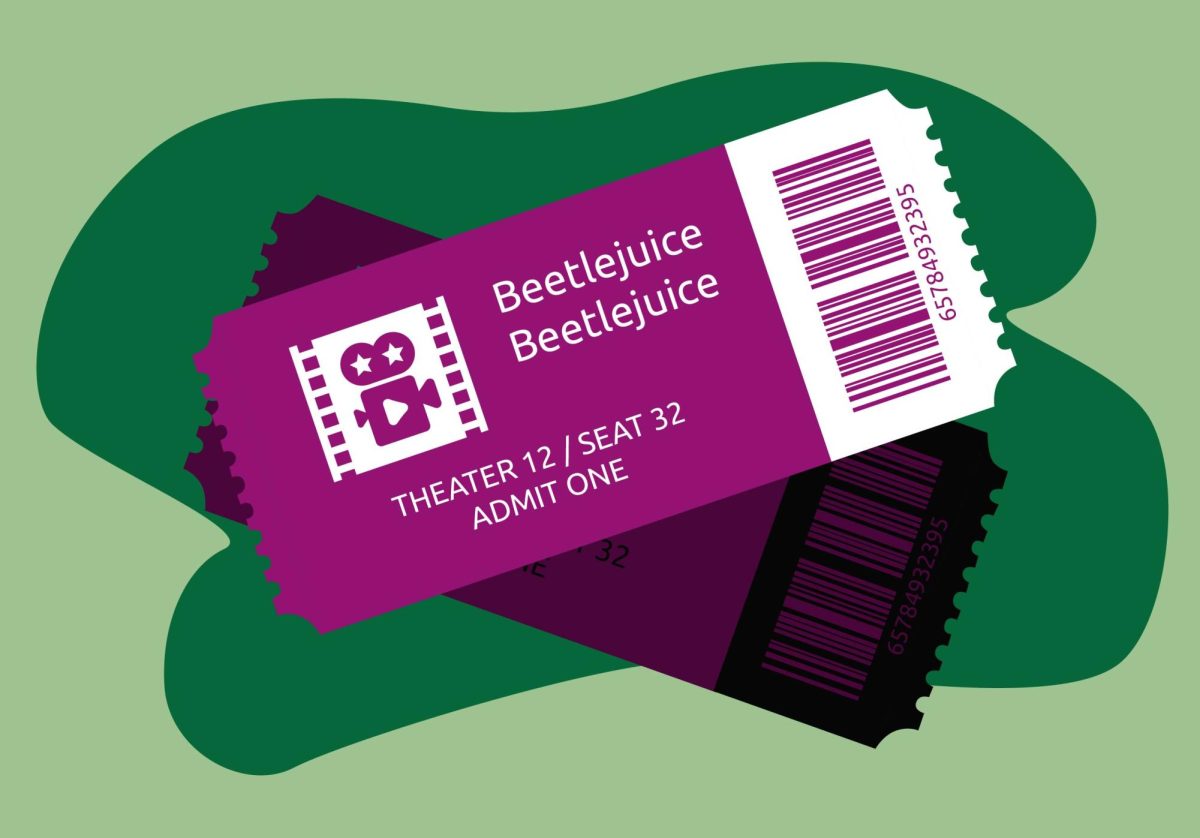As dark as it is silly, “Beetlejuice Beetlejuice” — the sequel to Tim Burton’s horror-comedy masterpiece — delightfully brings the original story into a modern-day setting.
Spooky, charming and funny, Burton’s signature neo-gothic style and macabre slapstick humor shine brilliantly in this hilariously zany sequel. Visually reminiscent of German expressionist cinema and surrealist painting, the film is not just an amusing comedy but a beautiful ode to horror cinema.
Continuing the story of the original, the sequel’s plot follows grown-up Lydia Deetz, a role reprised by Winona Ryder. Now a famous medium with her own TV show, Deetz returns to the haunted house from the first film after the death of her father. She is joined by her teenage daughter Astrid, boyfriend Rory and mother Delia, played by returning actress Catherine O’Hara.
The acting throughout is incredible, with every performance bringing the bizarre horror story to life. The star-studded cast made every character enjoyable, no matter how detestable the role.
Both Ryder and O’Hara bring another level of emotional depth to their characters, tying the events of the first movie to those of the sequel as they navigate another supernatural conundrum. O’Hara’s dramatically over-the-top portrayal of aging artist Delia Deetz stands out in a movie full of amazing performances.
Although the returning cast members may have stolen the show, the new characters rounded out the plot and distinguished this film from its predecessor. Willem Dafoe gives a very Willem Dafoe performance as undead action star-turned-detective Wolf Jackson.
Modern-day scream queen Jenna Ortega gives an amazing performance as the intelligent, yet moody, teenager Astrid Deetz, reminiscent of Lydia Deetz in the original film.
Even Lydia’s insufferably douchey manager and boyfriend, Rory, is an enjoyable part of the film because of actor Justin Theroux’s great comedic timing.
Of course, no discussion of this movie’s acting is complete without mentioning the main man himself.
Michael Keaton reprises his legendary role as the titular character, bringing the same wild, manic energy to his performance as he did in 1988. As expected, his performance of the iconic, demonic grifter steals the scene every time he is on screen, chaotically driving the plot forward with dirty jokes and meta references.
The movie never takes itself too seriously, emphasizing its deliberately exaggerated strangeness instead of focusing on a single, straightforward narrative. With a black-and-white sequence narrated in Latin harkening back to the early days of gothic horror, an actual soul train complete with undead disco dancers and countless instances of gags involving Cronenburg-ian body horror, the film is a stylistic love letter to the bizarre.
All of the sets were incredibly detailed and well-designed, from the realistic Stephen King-esque New England farmhouses to the zany, surreal arthouse scenes of the afterlife.
Like the original, the sequel takes place in the fictional town of Winter River, Connecticut. Unlike the original, an independent coffee roaster and vintage reselling store can be seen in downtown Winter River, an amusingly subtle nod to the film’s updated setting.
Fans of the original movie can be assured that the sequel is worthy of bearing its forebearer’s name, twice. Those unfamiliar with the franchise can expect a light-hearted and hilarious journey through horror history, framed by one of the most unique and recognizable stories ever told.








